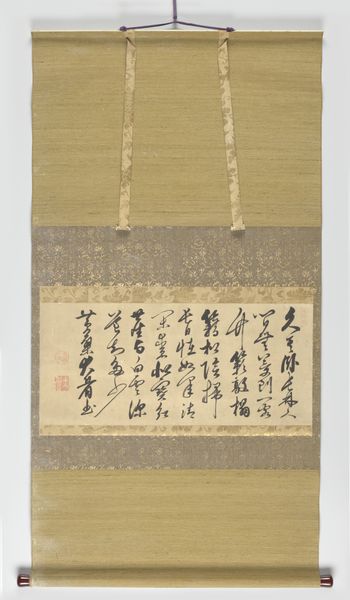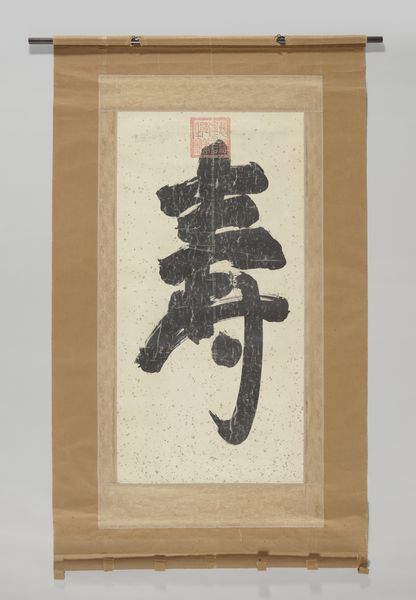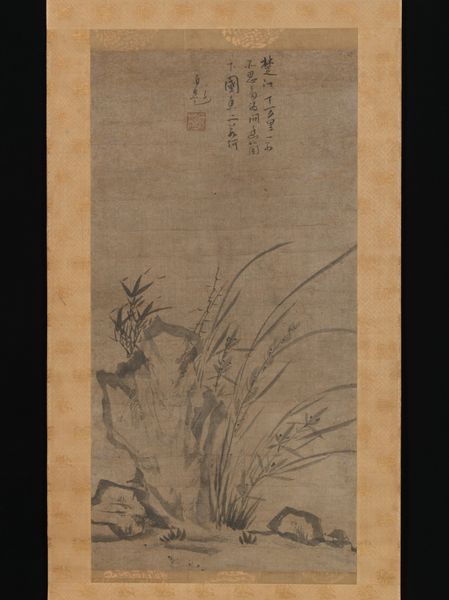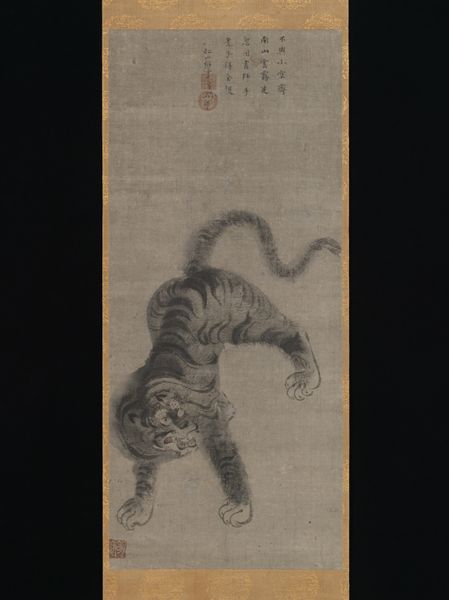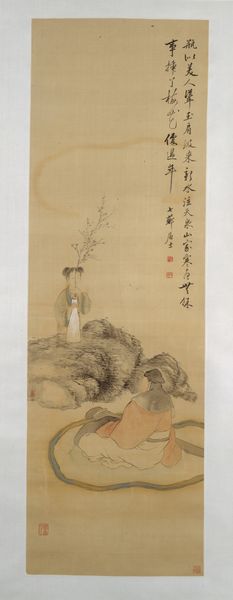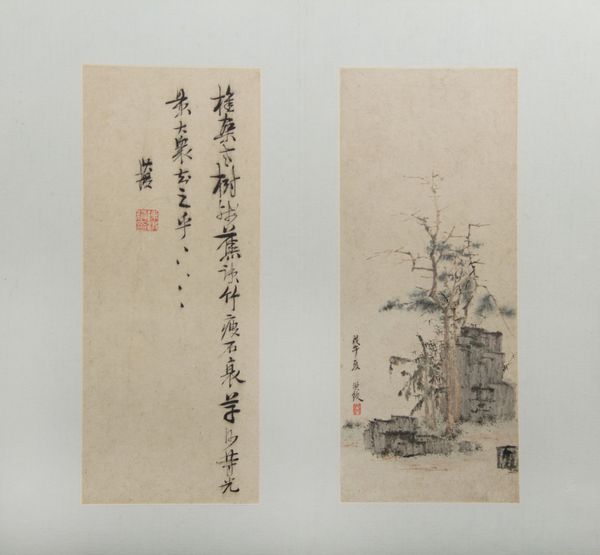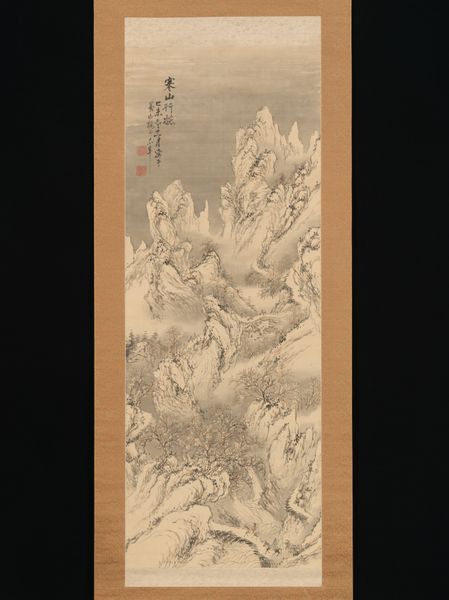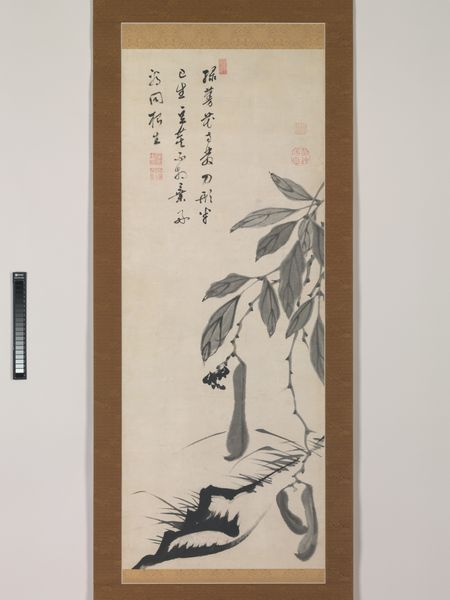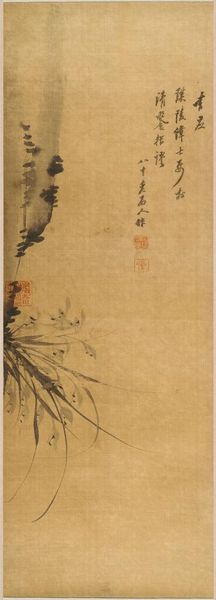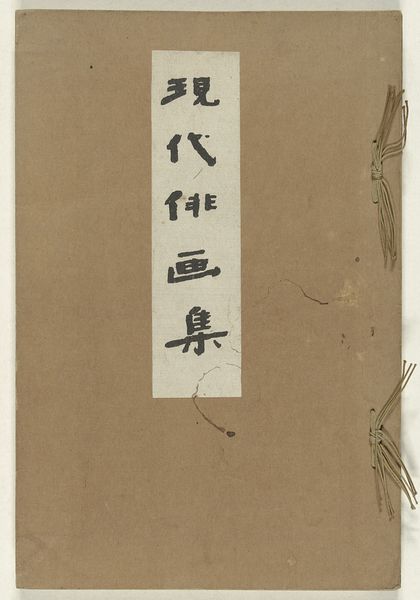
painting, paper, ink
#
animal
#
painting
#
asian-art
#
landscape
#
ukiyo-e
#
figuration
#
paper
#
ink
#
orientalism
#
line
Dimensions: height 127 cm, width 28.7 cm, height 203 cm, width 41.7 cm, height 7.5 cm, width 53.5 cm, depth 8.5 cm
Copyright: Rijks Museum: Open Domain
This scroll painting, rendered by Kōno Bairei, depicts a tiger, an animal with potent symbolism. In East Asian art, the tiger is often a symbol of courage, power, and protection, capable of warding off evil spirits. Consider how the tiger motif has journeyed through time. We find echoes of this symbolism in ancient Greek art, where animal figures were similarly imbued with protective qualities. The tiger, however, in its raw, untamed ferocity, engages our deepest fears and desires. This is a primal image that evokes a strong emotional response, connecting to collective memories of the untamed wilderness. The tiger's presence in art is not linear but cyclical. Its representation evolves, influenced by cultural shifts and psychological projections, demonstrating the powerful endurance and transformation of symbols across millennia.
Comments
rijksmuseum about 2 years ago
⋮
Bairei made this early work when he was a 21 or 22-year-old art student in Kyoto. Here he shows himself to be a capable pupil. Portrayed with careful, controlled lines, the tiger has become a slightly comical figure, as is more often the case in Japanese painting.
Join the conversation
Join millions of artists and users on Artera today and experience the ultimate creative platform.




